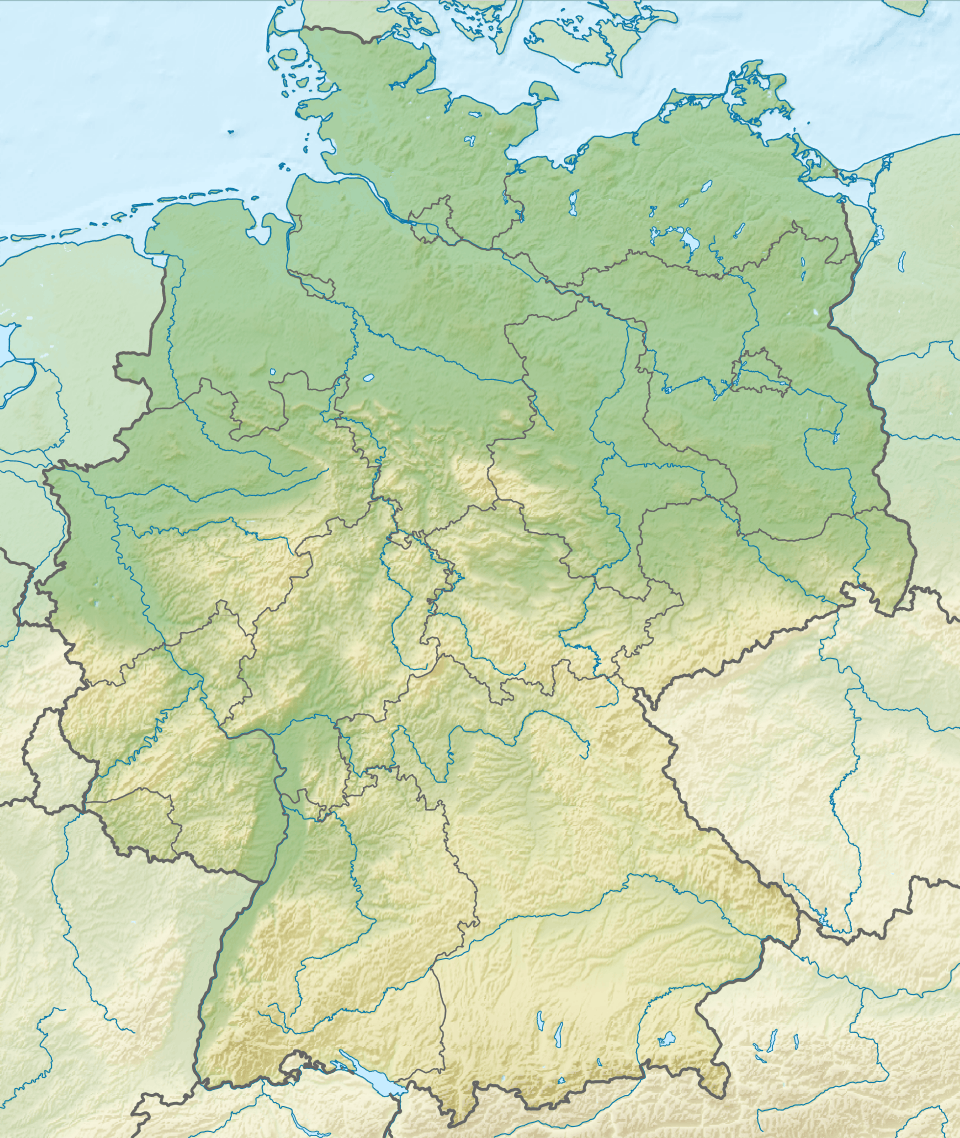Gotha Observatory
Gotha Observatory (Seeberg Observatory, Sternwarte Gotha or Seeberg-Sternwarte) was a German astronomical observatory located on Seeberg hill near Gotha, Thuringia, Germany.[1] Initially the observatory was dedicated to astrometry, geodetic and meteorological observation and tracking the time.
 Seeberg Observatory | |
| Location | Gotha, Germany |
|---|---|
| Coordinates | 50°56′0″N 10°45′0″E |
| Established | After 1787 |
| Closed | 1934 |
 Location of Gotha Observatory | |
The minor planet 1346 Gotha was named after the city of Gotha in recognition of the observatory.[2]
History
Planning for the observatory began in 1787 by the court astronomer Baron Franz Xaver von Zach, with the financing of Ernest II, Duke of Saxe-Gotha-Altenburg. It was based upon the Radcliffe Observatory in Oxford, England. The building was divided into five parts, with the central section holding a revolving dome. There were two wings to provide quarters for the staff.[3]
During Peter Andreas Hansen's term, the observatory was dismantled and moved to a less exposed location in Gotha.[3] The observatory was closed in 1934.[4]
Instruments
Around 1800, the observatory became an international center for astronomy, being the most modern astronomical institute primarily for its instruments.[5] The instruments came from London, England, the standard place to acquire them in the 18th century.[5][6] These included an eighteen-inch quadrant, a two-foot transit instrument, three Hadley sextants, an achromatic heliometer, a two-foot achromatic refractor, a Gregorian reflector and many clocks.[5]
By the start of the nineteenth century improved instrumentation was acquired from Munich, the standard place to acquire them in the 19th century:[4] consisting of a theodolite (Reichenbach, Utzschneider & Liebherr), a different heliometer (Fraunhofer), new mounting, and three-foot meridian circle (Ertel, Utzschneider & Fraunhofer). No spectroscopy or photography was performed at the observatory and the only astrophysical equipment of the observatory was a Zöllner photometer.[5]
Directors
The observatory directors were as follows:[7]
- Franz Xaver von Zach, 1787–1802
- Bernhard von Lindenau, 1802 - ?
- Johann Franz Encke, 1822–1825[8]
- Peter Andreas Hansen 1825 - 1876[8]
- Karl Nikolaus Adalbert Krueger 1876 for four years[9]
- Hugo von Seeliger, 1881[10]
| Wikimedia Commons has media related to Seeberg-Sternwarte Gotha. |
References
- Howse, D. (November 1986). "The Greenwich List of Observatories - a World List of Astronomical Observatories Instruments and Clocks - 1670-1850". Journal for the History of Astronomy. 17 (51): 1. Bibcode:1986JHA....17A...1H. – see page A29.
- Schmadel, Lutz D. (2003). Dictionary of minor planet names (5th ed.). Springer. p. 109. ISBN 978-3-540-00238-3.
- Armitage, A. (1949). "Baron von Zach and his astronomical correspondence". Popular Astronomy. 57: 326–332. Bibcode:1949PA.....57..326A.
- Wolfschmidt, Gudrun (1998). "Gotha - the instruments of the observatory". Acta Historica Astronomiae. 3: 89–90. Bibcode:1998AcHA....3...89W.
- Wolfschmidt, Gudrun (2005). "Gotha - the instruments of the observatory". Acta Historica Astronomiae. 3: 89. Bibcode:1998AcHA....3...89W. Retrieved 2009-05-16.
- Barton, William (1813). Memoirs of the Life of David Rittenhouse. E. Parker. pp. 130. ISBN 978-1-146-88042-8.
- Taylor, Marie Hansen; Kiliani, Lilian Bayard Taylor (1905). On two continents: memories of half a century. Doubleday, Page & company. p. 4. ISBN 978-0-548-98711-7. Retrieved 2009-05-12.
- S., E. C. (1921). "Calendar of Scientific Pioneers". Nature. 107 (2682): 124. Bibcode:1921Natur.107..124E. doi:10.1038/107124a0. Retrieved April 15, 2009.
- Royal Astronomical Society (1897). Monthly Notices of the Royal Astronomical Society. Blackwell Scientific Publications. p. 224.
- Macpherson, Hector (1905). Astronomers of to-day and their work. Gall & Inglis. pp. 180.